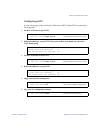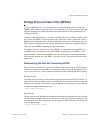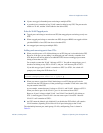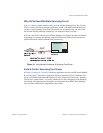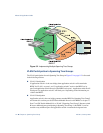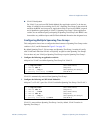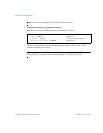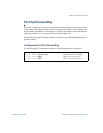
Alteon OS Application Guide
108
Chapter 5: Spanning Tree Group 42C4911, January 2007
Port Path Cost
The port path cost assigns lower values to high-bandwidth ports, such as Gigabit Ethernet, to
encourage their use. The cost of a port also depends on whether the port operates at full-duplex
(lower cost) or half-duplex (higher cost). For example, if a 100-Mbps (Fast Ethernet) link has a
“cost” of 10 in half-duplex mode, it will have a cost of 5 in full-duplex mode. The objective is
to use the fastest links so that the route with the lowest cost is chosen. A value of 0 indicates
that the default cost will be computed for an auto-negotiated link speed.
Spanning Tree Group configuration guidelines
This section provides important information on configuring Spanning Tree Groups (STGs):
Adding a VLAN to a Spanning Tree Group
If no VLANs exist beyond the default VLAN 1 see “Creating a VLAN” on page 108 for
information on adding ports to VLANs.
Add the VLAN to the STG using the /cfg/l2/stg <stg-#>/add <vlan-number>
command.
NOTE – To ensure proper operation with switches that use Cisco Per VLAN Spanning
Tree (PVST+), you must either create a separate STG for each VLAN, or
manually add all associated VLANs into a single STG.
Creating a VLAN
When you create a VLAN, that VLAN automatically belongs to STG 1, the default STG. If you
want the VLAN in another STG, you must move the VLAN by assigning it to another STG.
Move a newly created VLAN to an existing STG by following this order:
Create the VLAN
Add the VLAN to an existing STG
VLANs must be contained within a single STG; a VLAN cannot span multiple STGs. By
confining VLANs within a single STG, you avoid problems with spanning tree blocking
ports and causing a loss of connectivity within the VLAN. When a VLAN spans multiple
switches, it is recommended that the VLAN remain within the same Spanning Tree Group
(have the same STG ID) across all the switches.






